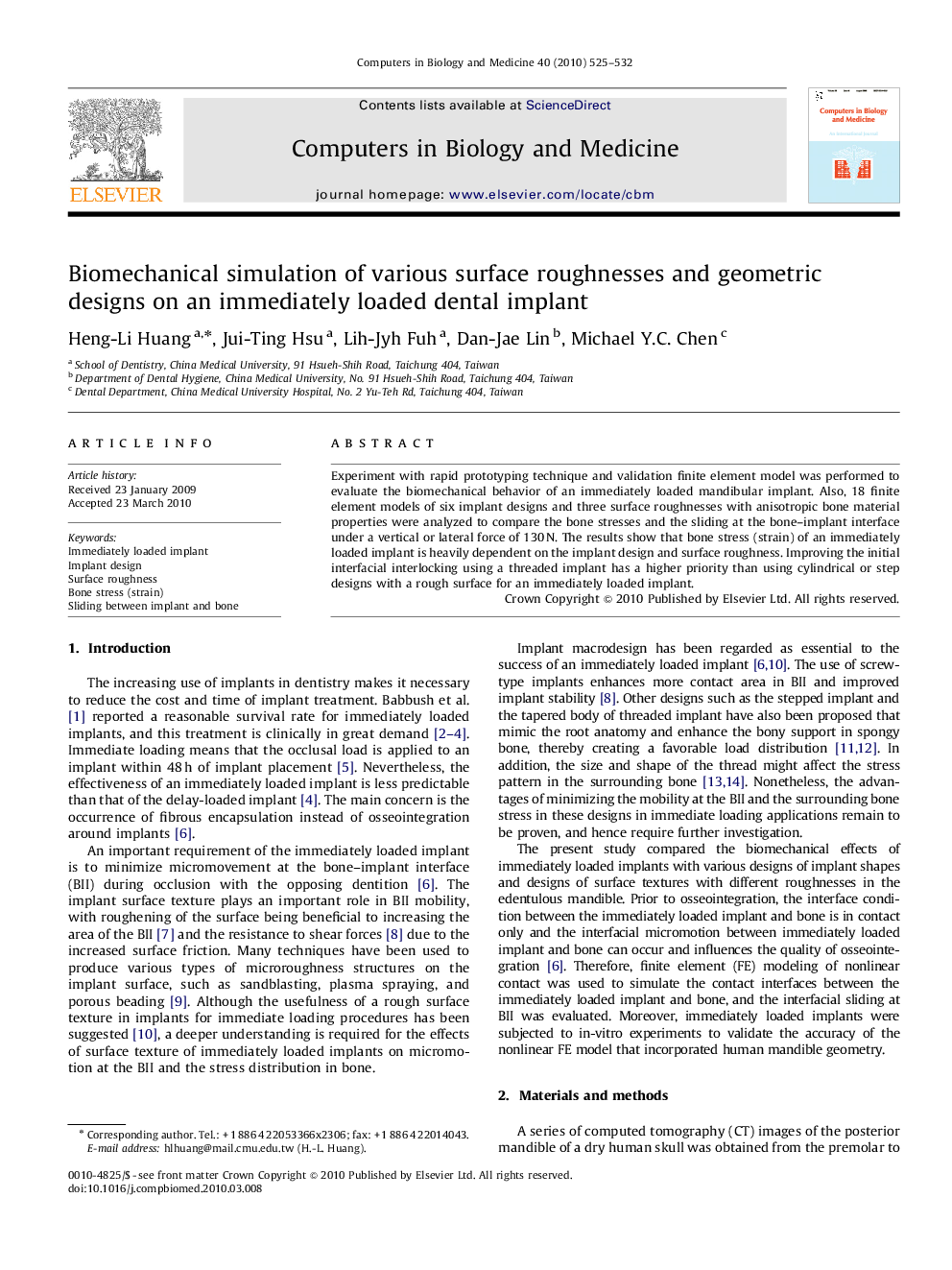| Article ID | Journal | Published Year | Pages | File Type |
|---|---|---|---|---|
| 505491 | Computers in Biology and Medicine | 2010 | 8 Pages |
Experiment with rapid prototyping technique and validation finite element model was performed to evaluate the biomechanical behavior of an immediately loaded mandibular implant. Also, 18 finite element models of six implant designs and three surface roughnesses with anisotropic bone material properties were analyzed to compare the bone stresses and the sliding at the bone–implant interface under a vertical or lateral force of 130 N. The results show that bone stress (strain) of an immediately loaded implant is heavily dependent on the implant design and surface roughness. Improving the initial interfacial interlocking using a threaded implant has a higher priority than using cylindrical or step designs with a rough surface for an immediately loaded implant.
